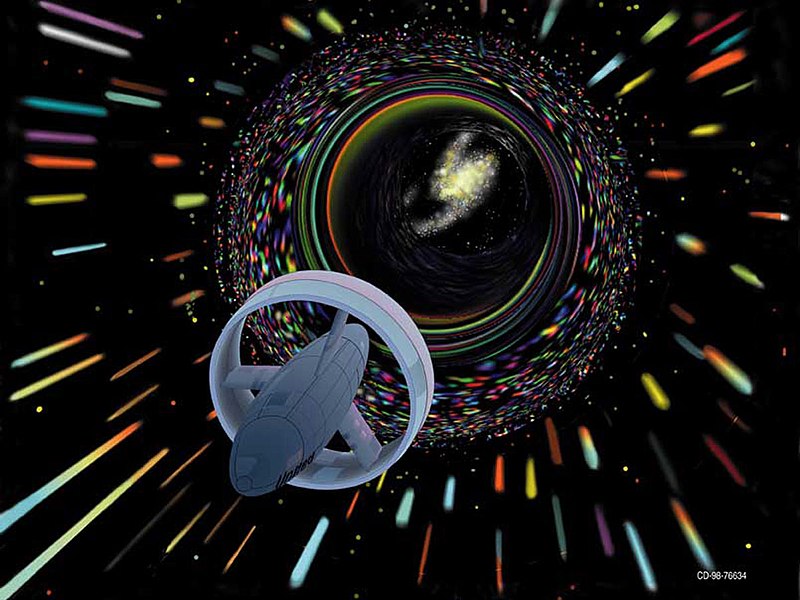At present, interstellar space travel is a very challenging and technically difficult task, and we are still far away from achieving it. While there have been many proposals and ideas for how interstellar travel could be accomplished, no practical and reliable means of achieving it currently exists.
One of the main challenges of interstellar travel is the vast distances involved. Even the closest star system, Proxima Centauri, is over 4 light-years away, which means that it would take a spacecraft traveling at the speed of light over 4 years to reach it. The fastest spacecraft ever built, NASA’s Parker Solar Probe, travels at a speed of around 430,000 miles per hour, which is still only a tiny fraction of the speed of light.
Another major challenge is the need for advanced propulsion systems and energy sources that can operate over long periods of time. While there have been many proposals for advanced propulsion technologies, such as nuclear fusion and antimatter engines, these technologies are still in the early stages of development and are not yet practical for interstellar travel.
There are several advanced propulsion systems under development that could potentially enable faster and more efficient space travel in the future. Here are a few examples:
Nuclear propulsion: This technology uses nuclear reactions to generate thrust and could potentially provide much higher speeds than chemical rockets. NASA is currently developing a nuclear thermal propulsion system that uses a small nuclear reactor to heat a propellant, which is then expelled through a nozzle to produce thrust.
Electric propulsion: Electric propulsion systems use electric fields to accelerate ions or other particles to high speeds, providing a more efficient and longer-lasting means of propulsion than chemical rockets. Several types of electric propulsion systems are under development, including ion thrusters and Hall effect thrusters.
Solar sails: Solar sails use the pressure of sunlight to generate propulsion, allowing a spacecraft to accelerate over long distances without the need for fuel. The Planetary Society is currently developing a solar sail spacecraft called LightSail 2, which has successfully demonstrated solar sailing in Earth orbit.
Antimatter propulsion: Antimatter is a type of matter that has the opposite charge of normal matter, and when antimatter and matter collide, they annihilate each other, releasing large amounts of energy. By using this energy to heat a propellant, an antimatter propulsion system could potentially provide extremely high speeds. However, the production and storage of antimatter is currently extremely challenging and expensive, so this technology is still in the early stages of development.
Warp drive: While still very much in the realm of science fiction, the idea of a “warp drive” that could warp space-time to allow for faster-than-light travel has been the subject of ongoing research and speculation. Some physicists have proposed theoretical designs for a warp drive, although significant technological and theoretical challenges would need to be overcome to make it a reality.
Overall, while these technologies are still in the early stages of development and face significant technical and engineering challenges, they offer exciting potential for the future of space travel.
What would the advantages of interstellar travel be?
Interstellar travel, if and when it becomes possible, could have several potential advantages, including:
Exploration: Interstellar travel would allow us to explore other star systems and potentially discover new planets, moons, asteroids, and other celestial objects. This could lead to new discoveries and insights into the origins and nature of the universe.
Colonization: If we are able to find habitable planets outside our solar system, interstellar travel could allow us to establish colonies on these planets and potentially ensure the survival of the human species in the event of a catastrophic event on Earth.
Resource extraction: Interstellar travel could potentially enable us to access valuable resources in other star systems, such as rare metals, minerals, and gases that are not abundant on Earth.
Scientific research: Interstellar travel could enable us to conduct experiments and observations in environments that are not available on Earth or in our own solar system, which could lead to new scientific discoveries and breakthroughs.
Cooperation: The development of interstellar travel could require international cooperation and collaboration, which could potentially promote greater understanding and cooperation among different nations and cultures.
Where would we go first if we could crack interstellar travel?
If and when interstellar travel becomes possible, the choice of where to travel first will depend on a variety of factors, including scientific goals, resources available, and technological capabilities. Here are a few potential targets that have been proposed by scientists and space enthusiasts:
Proxima Centauri: Proxima Centauri is the closest star system to our own, located just over 4 light-years away. It has a potentially habitable planet orbiting it, called Proxima Centauri b, which has generated significant interest in the scientific community as a potential target for interstellar exploration.
TRAPPIST-1: The TRAPPIST-1 system is a nearby star system located approximately 40 light-years away. It has seven Earth-sized planets orbiting it, three of which are in the star’s habitable zone, making it another potential target for interstellar exploration.
The Oort Cloud: The Oort Cloud is a vast cloud of icy objects located at the edge of our solar system, beyond the orbit of Pluto. While not a star system per se, it represents a potentially rich source of resources and could be a target for future space mining efforts.
Nearby star systems: There are several other nearby star systems that have been identified as potential targets for interstellar exploration, including Alpha Centauri, Barnard’s Star, and Wolf 359.
Overall, the choice of where to travel first with interstellar travel will depend on a variety of factors, including scientific goals, resources available, and technological capabilities. Whatever the target, it will likely represent a major milestone in human space exploration and a major achievement in the history of human civilization.
In summary, while interstellar travel is certainly a fascinating and exciting prospect, it is unlikely to be achieved in the near future due to the many technical challenges involved. However, ongoing research and development in fields such as propulsion, energy, and materials science may eventually make interstellar travel a reality in the distant future.

